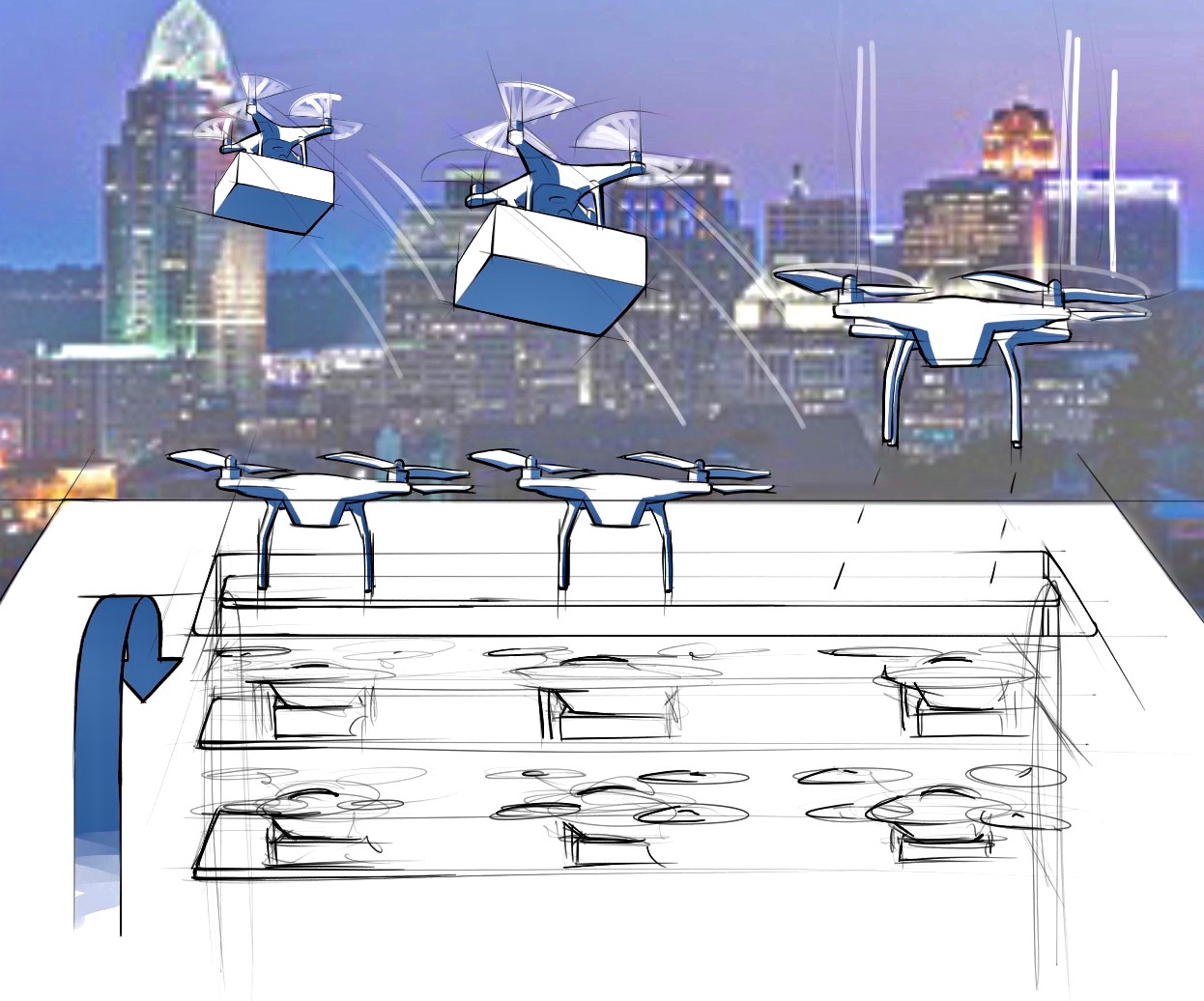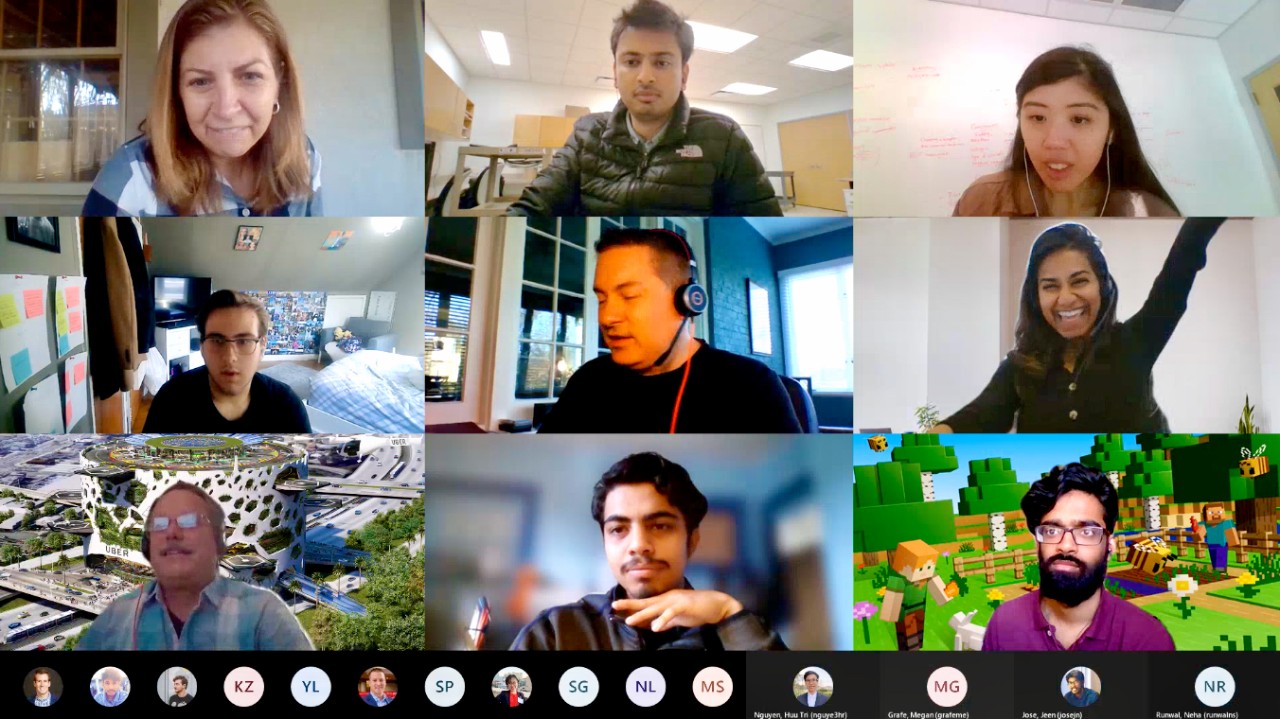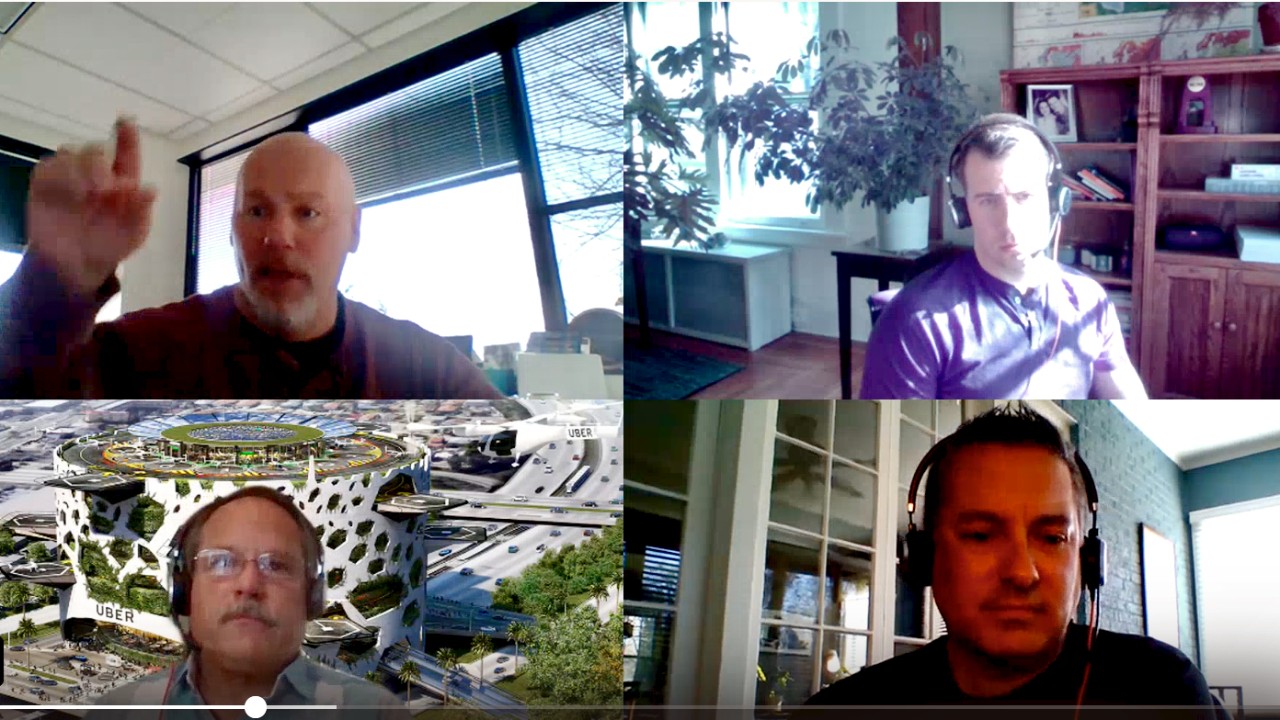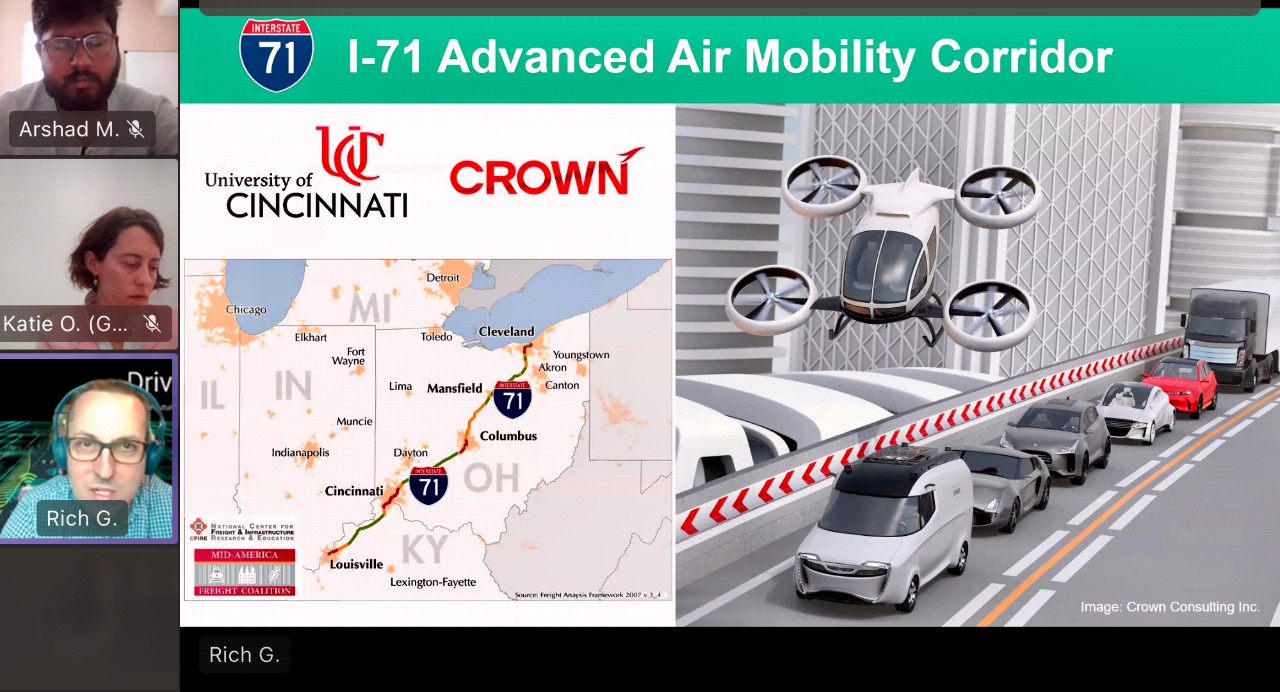Abstract notions of seeing sleek and stealthy flying octopods - humming along Ohio's interstate airspace carrying cargo, medical supplies (blood, organs, materials) or even humans themselves - are not so far-fetched, according to students at the University of Cincinnati.
When UC and the Cincinnati Innovation District® get down to business with some of the most seasoned air mobility professionals, great things tend to happen.
The FlyOhio Vertiport Innovation Challenge, recently coordinated by UC's Office of Innovation and FlyOhio, a division of DriveOhio, the state's center for smart mobility, along with Cincinnati Bell Technology Solutions (CBTS) and UC's new innovation partner Microsoft, brought industry professionals together to collaborate with UC talent and help bring future innovation within reach.
According to David J. Adams, architect of the CID and UC's chief innovation officer, innovation challenges like FlyOhio are important to solving actual problems by establishing an environment for 'creative collisions.' "Organizations and companies are trying to connect with talent - students, researchers and educators - to solve real-world challenges. The CID provides the physical and virtual environment that makes that happen. It's a great learning opportunity for everyone," says Adams.
Even the state of Ohio leadership is taking notice of what's happening inside the CID - now the model for the state.
"Innovation and collaboration are pillars as we work to make Ohio the most innovative state in the Midwest," said Lt. Gov. Jon Husted during the opening of the event. "Today's collaboration between student talent and inventive companies exemplifies the inclusive, connective and purpose-built ecosystem that is transforming our heartland."

Student challenge team One the 'Vertibirds,' illustrate how a NESTRoof acts as a landing pad and takeoff zone for package delivery. Drones on top of the PERCH take off when the panel gets to the top. Post-delivery drone replaces empty spot on PERCH. PERCH charges the drone as it moves downward on the conveyor belt. Drone then gets new package and heads back up to the roof. Photo/Haley Rich
In the groundbreaking challenge, students across campus from a variety of fields including mechanical, aerospace and computer science engineering, as well as industrial design, business marketing and mathematics majors looked forward to the unique opportunity to collaborate with and learn from national and international leaders in air mobility.

As industry experts engaged with students on technical and innovative strategies, UC business analytics student Bhagya Godakanda (right center) shoes excitement over winning the second day's creative engagement prize, a Surface Pro tablet from Microsoft. Photo/provided
Guided by air mobility industry experts during the two-day, weekend event, students began engaging in technical discussions on everything from logistics issues to preventing the collisions of hundreds of whirling flying machines - largely motivated by highly advanced broadband requirements for keeping a manned-vehicle or UAV on course above major Ohio interstate routes.
Rich Granger, managing director of workforce and economic development at DriveOhio, led innovation ground mobility challenges with universities in Ohio before and noted this first-of-a-kind challenge opened the door to discovering fresh new talent with fresh new ideas. "This was our first drone air mobility challenge, and it was a fantastic event," says Granger. "It exceeded our already high expectations of the level of student innovation."
As the FlyOhio kickoff for the whole state, Granger looks forward to UC and the CID to set the pace for a whole statewide series of events. As more and more innovative students and graduates are choosing to stay in the CID region - for all the thriving opportunities in one of the most affordable cities in the country - Cincinnati has become a growing beacon of innovation to the region and state.

Tim Lonsway, upper left, VP public sector for Cincinnati Bell helps hash out collaborative strategies for the student challenge with Ken Stapleton, lower left, senior director of UC Innovation Relations, RJ Sargent, lower right, director business professional development for UC Office of Innovation and Jesse Lawrence, upper right, assistant director partnerships and industry alliances for UC Office of Innovation. Photo/provided
As savvy teams began to dive deeper into how battery powered air mobility could revolutionize the current ecosystem, they ramped up their reconnaissance research to look closer at wind issues, terrain, noise factors and FAA rules.
Together, their collaborations contributed a bevy of inspiration for bringing futuristic drone mobility to life as a way to move packages and people around the region in sustainable ways to boost the economy, save time, reduce the carbon footprint and improve lives across the state.

Unmanned battery-powered aerial mobility may soon replace a large share of package delivery from ground transportation relieving congested roadways and reducing the carbon footprint. Photo/provided
Among the collaborations he enjoyed as a team member, Sagar Tiwari, UC fifth-year mechanical engineering student and winner of the first day's panel discussion, was especially grateful for the opportunity to work with the industry panelists who were all experts in the field.
"More competitions like this are where I think UC is really key because we have such a wide variety of student challenge events and experiential opportunities that help account for the number of engineering students looking forward to staying and working in the Cincinnati Innovation District area," says Tiwari.
Participants like My Dinh, UC third-year business student with a double major in marketing and business analytics and a member of the event's winning team who presented on Smart Medical Supply Mobility, says, "Working together virtually is also a good model for how well teams can perform on any project while together or apart."

Team Four's innovative strategies for landing and takeoff were presented at the end of the FlyOhio Challenge. Photo/Ngoc Luong
Megan Graf, third-year industrial design student from UC's College of Design, Architecture, Art, and Planning (DAAP), and member of the team "VertiBirds," was intrigued by the way her design of the vertiport infrastructure interplayed well with aerospace engineering student Mason Turvey's work on fuzzy architecture and control systems.






